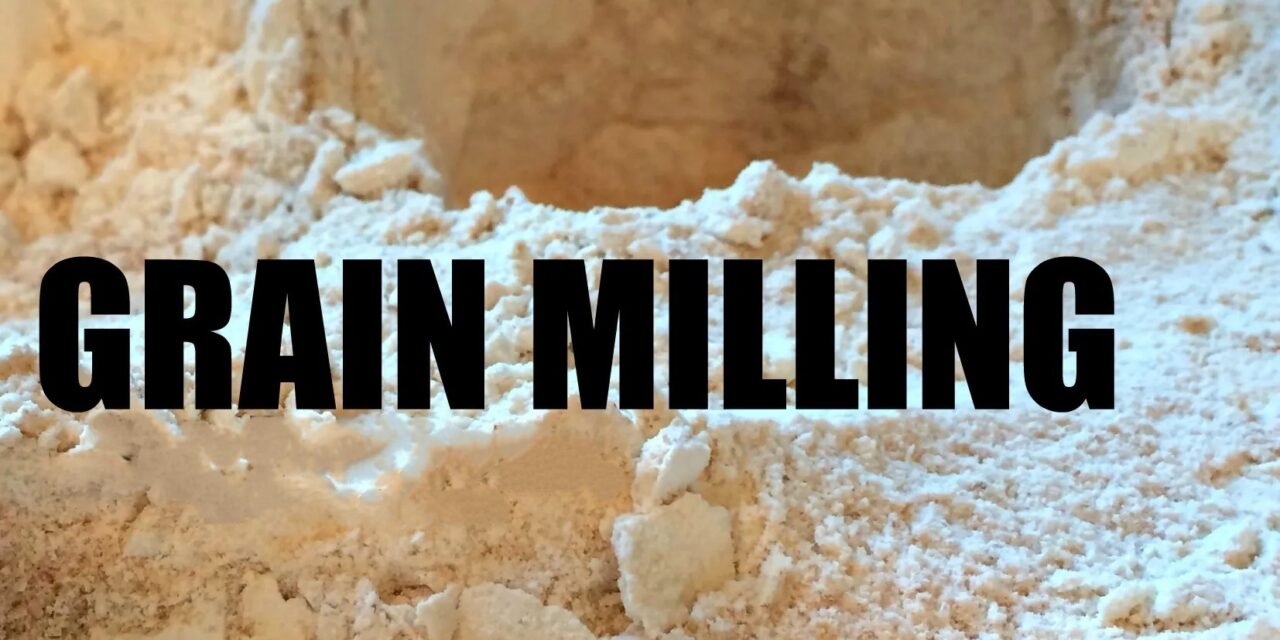Milling significantly impacts the nutritional value of grains by altering their composition and bioavailability of nutrients. The extent of these changes depends on the milling process and the degree to which the grain’s outer layers are removed. Below is a detailed breakdown of how milling affects the nutritional value of grains:
1. Removal of Nutrient-Rich Layers
- Loss of Bran: The bran layer, which contains dietary fiber, B vitamins, minerals (e.g., iron, zinc, magnesium), and antioxidants, is often removed during milling to produce refined flour.
- Loss of Germ: The germ is a nutrient-dense part of the grain, rich in healthy fats, vitamin E, B vitamins, and phytonutrients. Milling often removes the germ to improve shelf life, as its fat content can lead to rancidity.
- Refined Endosperm: Milling predominantly retains the endosperm, which is high in starch and contains some protein but lacks the fiber, vitamins, and minerals found in the bran and germ.
2. Impact on Fiber Content
- Decreased Fiber: Whole grains are rich in dietary fiber, which supports digestion and heart health. Milling into refined grains removes most of the fiber, reducing the health benefits associated with whole grains.
3. Loss of Micronutrients
- Reduction in Vitamins: Vitamins such as B1 (thiamine), B2 (riboflavin), B3 (niacin), and folate are concentrated in the bran and germ. Milling can significantly reduce these vitamins in the final product.
- Mineral Depletion: Minerals like iron, magnesium, phosphorus, and zinc are also concentrated in the outer layers and are lost during refining.
- Enrichment Practices: Some nutrients lost during milling (e.g., B vitamins and iron) are often added back through enrichment, though this does not restore all the original nutrients.
4. Changes in Bioavailability
- Enhanced Digestibility: Milling can make grains easier to digest by breaking down their structure, which improves the bioavailability of starch and some proteins.
- Reduced Antinutrients: Milling can reduce antinutritional factors like phytates, which inhibit the absorption of minerals such as iron and zinc. This can improve mineral bioavailability in refined products.
5. Effects on Functional Components
- Loss of Phytochemicals: Phenolic compounds, flavonoids, and other antioxidants found in the bran are diminished in refined flours, reducing their protective health benefits.
- Germ Oils and Fats: Milling removes germ oils, which are a source of vitamin E and healthy unsaturated fats.
6. Influence of Milling Techniques
- Traditional Stone Milling: Preserves more of the grain’s natural nutrients by grinding the whole grain, producing flour with higher fiber, vitamins, and minerals.
- Modern Roller Milling: Often separates the grain into its components, leading to a significant reduction in nutritional content unless whole grain products are reconstituted.
- Specialized Milling Techniques:
- Cryogenic Milling: Preserves heat-sensitive nutrients by milling at low temperatures.
- Air Classifying Mills: Enable selective separation of grain fractions to retain desired nutrients while refining texture.
7. Whole Grain vs. Refined Products
- Whole Grain Products: Retain the bran, germ, and endosperm, preserving the full nutrient profile of the grain.
- Refined Products: Focus on the starchy endosperm, providing primarily carbohydrates with fewer vitamins, minerals, and fibers.
8. Milling and Fortification
- Enrichment: Adding nutrients back into refined grains (e.g., fortified flour) compensates for some of the losses but typically does not replace fiber or certain phytochemicals.
- Biofortification: Emerging techniques aim to enhance the nutrient content of grains pre-milling through genetic or agronomic methods.
9. Shelf Life and Nutritional Trade-Offs
- Extended Shelf Life: Removing the germ during milling reduces spoilage risk due to fat oxidation, but it comes at the cost of losing valuable nutrients.
- Consumer Preferences: Refined grains are often preferred for texture and flavor but lack the nutritional benefits of whole grains.
Conclusion
Milling can both diminish and enhance the nutritional value of grains, depending on the process and goals. Whole grain milling retains the complete nutrient profile, whereas refined milling sacrifices nutrients for texture, flavor, and shelf stability. To maximize nutritional benefits, consumers are encouraged to choose whole grain products or enriched/fortified options when refined grains are consumed.
Hashtags
#GrainRevolution #FarmtoTable #HealthyEating #GrainPower #FoodProduction #GrainQuality #InnovativeMilling #NutritionEducation #SustainableFarming #GrainHealth #FoodSafety #GrainIndustry #WholeGrainGoodness #NutrientRich #FoodInnovation #GrainSustainability #HealthyChoices #GrainNutrition #FoodProcessingTechnology #GrainBasedProducts









